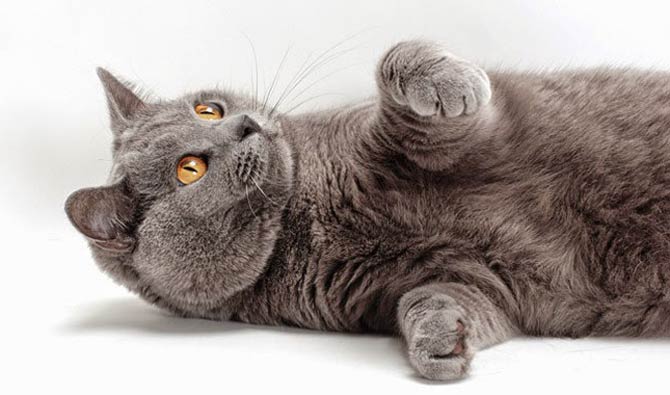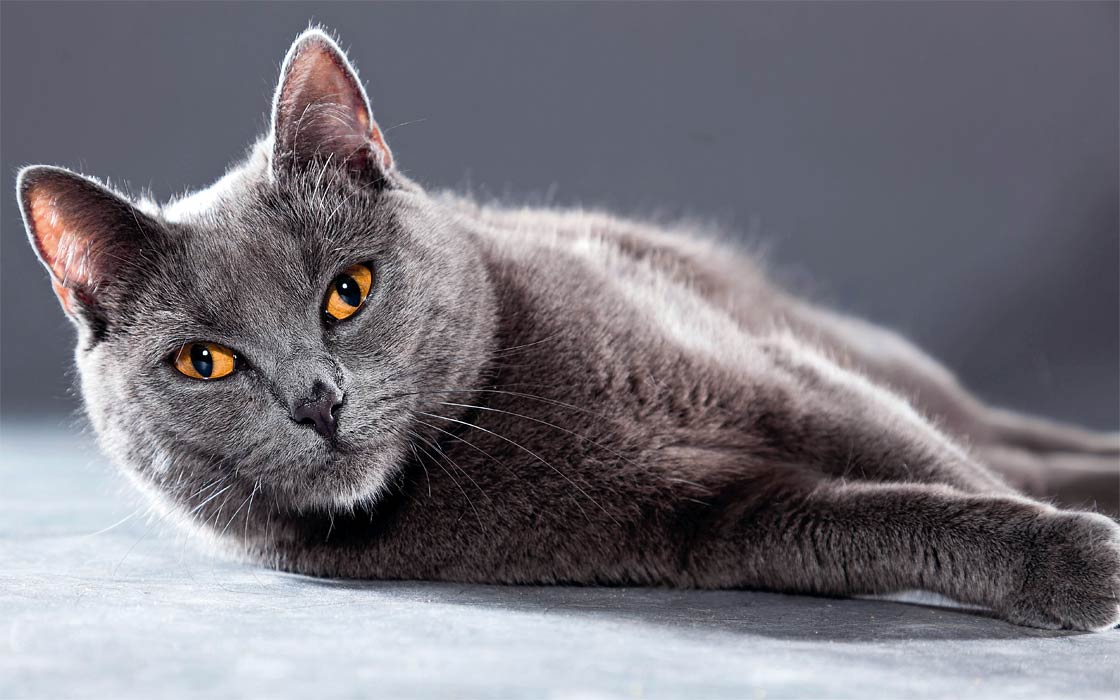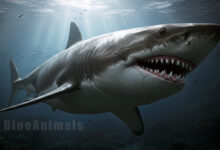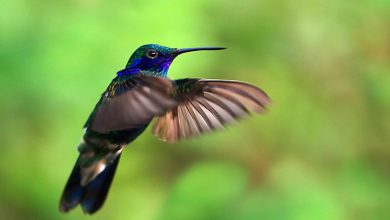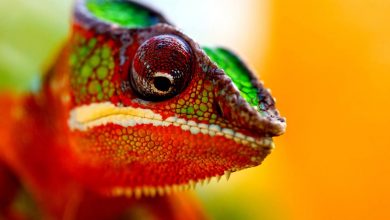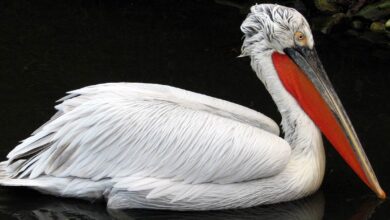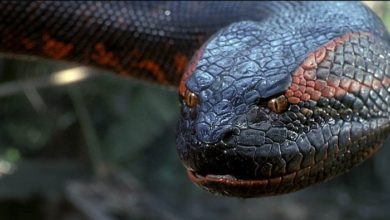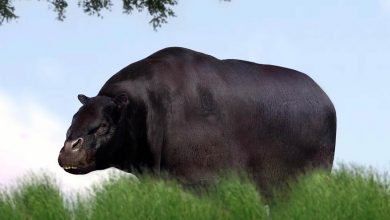Chartreux cat
It is said that these cats were under the care of French monks from the 13th century, thanks to whom they got their present name. It is difficult to say whether this story is just a legend or a fact. If this were to be true, however, the Chartreux cat would certainly be a wonderful companion for the silent monks. Thanks to its calm nature and warm disposition, it would not disturb its contemplating guardians in their spiritual development.
If a Chartreux cat reminds you of a Russian Blue or British Shorthair cat, or sometimes you can’t even tell them apart, then there is nothing strange about it. These cats have both of these breeds in their genes, but more on that in a moment.
FIFe classification
- Category III: Shorthair cats
- EMS code: CHA
- Country of origin: France
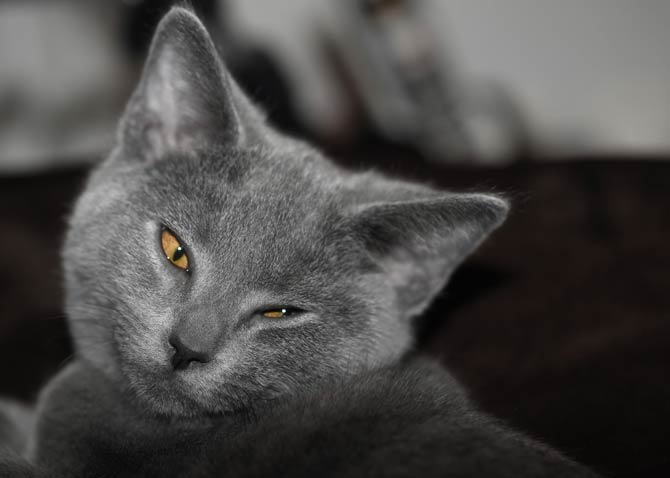
History of the breed
It is possible that the breed was established in the thirteenth century and was called the mountain cat in what is now Syria. According to historical records, some cats were transported by the Crusaders to France, who then joined the Carthusian monastic order. Apparently, they were the perfect companions of these monks because of their calm disposition that allowed their guardians to contemplate.
Name
The breed owes its present name, however, not to the monks themselves, but to the green and yellow liqueurs called Chartreuse, produced by the Carthusians. The story, while it sounds beautiful and mysterious, may not be true. However, we probably won’t find out anymore.
The first verifiable records of the breed come from the 16th century, and 200 years later, in his work Histoire naturelle, générale et particulière cats of the Chartreux type was described by a famous French biologist, Count de Buffon (was he a buffoon? We do not know;).
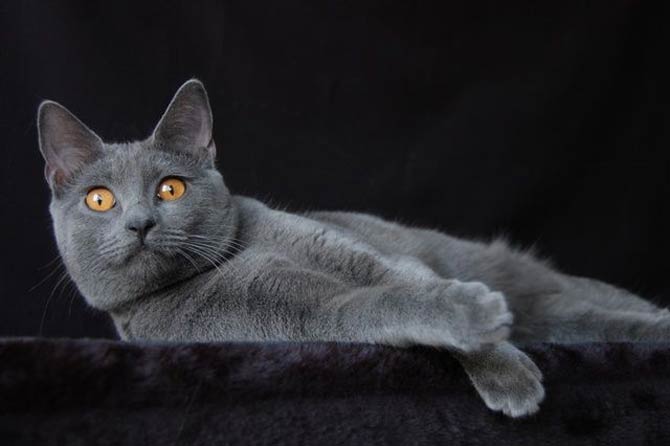
Modern Chartreux cats
The modern variant of the Chartreux cat dates back to the 1920s, when two sisters discovered a colony of blue cats on Belle-Île Island. They lived near the hospital in the city of Le Palais and looked very much like the Chartreux breed.
The rebirth of the Chartreux breed
For a long time, the Chartreux cat was a favorite of the French due to its hunting skills and good character. Between World Wars I and II, the breed, like many others, was on the brink of extinction, but avid European breeders prevented it. The breed was revived thanks to the crossing of its representatives with British Shorthair, Russian Blue and Persian cats.
American Chartreux breed
The breed appeared in the USA in 1971. The breeders there tried very hard to improve the appearance of the Chartreux cat. Nowadays, the North American Chartreux line is considered to be the purest variety of the breed.
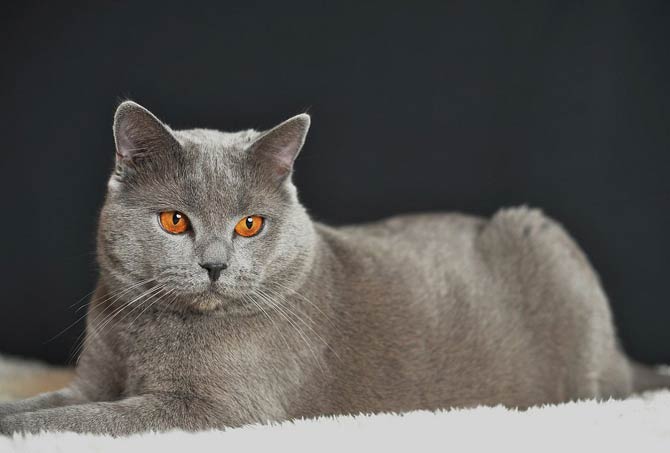
Characteristic
Appearance
The stocky silhouette of the Chartreux cat evokes another beautiful breed – the British Shorthair cat. The main difference between the two breeds is in the shape of the head: in the British cats it is rounded, while in the Carthusian it is more like a trapezoid.
The large body is covered with a two-layer, thick, short, waterproof fur in shades of silvery blue. The contrast to the subdued coat is the intense orange irises of the round, large eyes. On the other hand, full cheeks are visible under the eyes, giving the cat a cute look.
Although the silhouette may look fat, its main building material is muscle tissue. Thanks to this, the animal is agile and flexible. Cats of this breed, however, grow slowly compared to other purebreds – they do not reach their full size until 4-5 years of age.
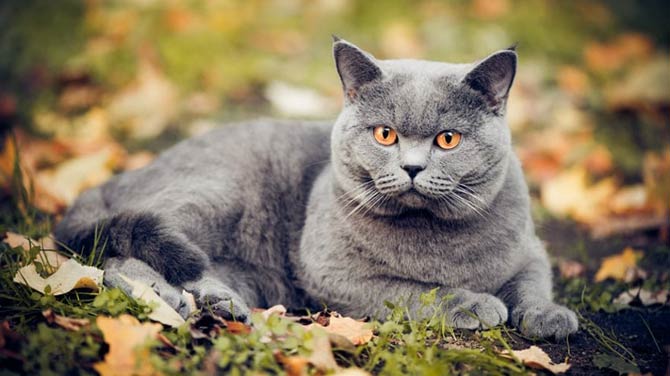
Temperament
A Chartreux cat does not have to make many sounds to communicate with its owners. It willingly “talks” through gestures and body movement. It is relatively active during the day, but also likes to sleep and eat. However, if it wants to have fun, it will “bully” toys or perform various acrobatics. As an experienced hunter, it is an excellent hunter for rodents.
Chartreux cat loves owners
It loves the company of owners, so it eagerly observes them during the day. It undergoes gentle caresses, such as scratching the chin or between the ears. If the cat senses that its owner is sick or unwell, it lies down next to him, to hearten.
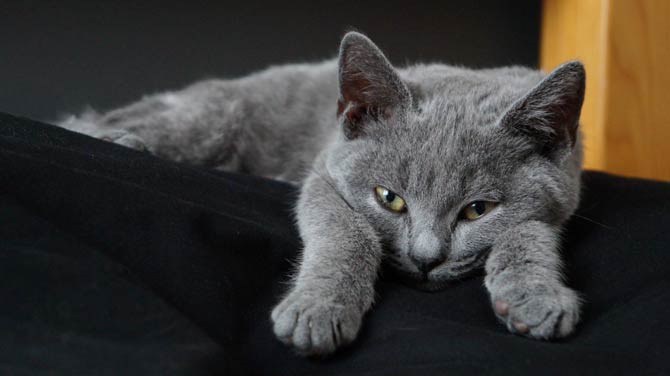
Chartreux cat rarely meows
It does not belong to noisy cats – it rarely meows. Sometimes, however, it makes soft mews or chirps. It is certainly not very social, but it cannot be called shy either. Before taking any action, it watches and waits for events to unfold. This also applies when the house is visited by guests. The cat will not always come to the conclusion that it wants to say hello to the newcomer.
Chartreux cat has peaceful nature
Due to its quiet nature, it is perfect for busy people who spend a large part of the day outside the home. The Chartreux cat will sleep nicely or move around the house while waiting for its owners to return. However, the company of another cat or a friendly, smart dog will not hurt him.
Like the Persian cat, it enjoys a nice routine, but is also a good travel companion. However, in order to gain the sympathy and respect of the Chartreux cat, one must be kind and patient with him. Thanks to this, we can gain a friend for life.

Detailed data / dimensions (size)
Chartreux cat / Carthusian cat
- Height at the withers: 23-28 cm (9-11 in)
- Weight: 4-5 kg (9-11 lb)
- Lifespan: 11-16 years or more
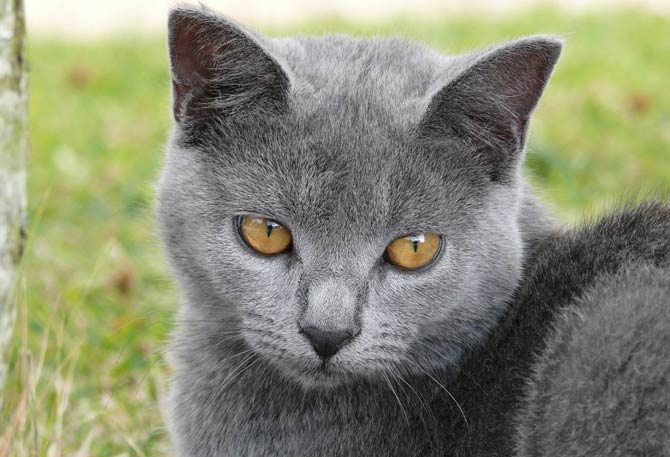
Chartreux cat – interesting facts
- Chartreux cat is a very intelligent cat – it quickly reacts to its name.
- The Chartreux cat is the mascot of the world’s largest jazz music festival – Festival International de Jazz de Montréal.
- The Chartreux breed is rather healthy, but the cases of kneecap dislocation are relatively common. It can be mild to severe. The most severe form of dislocation leads to disability, but the effects of the dislocation can be mitigated by surgery.
